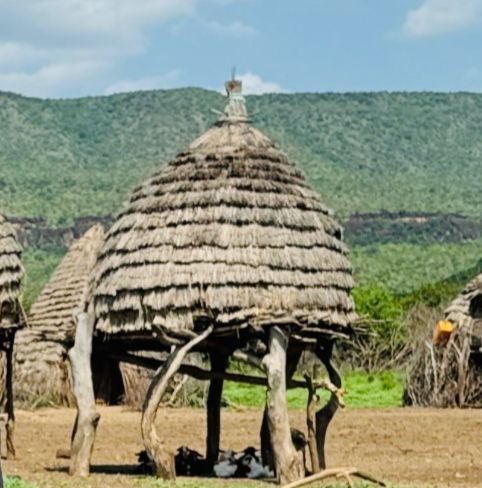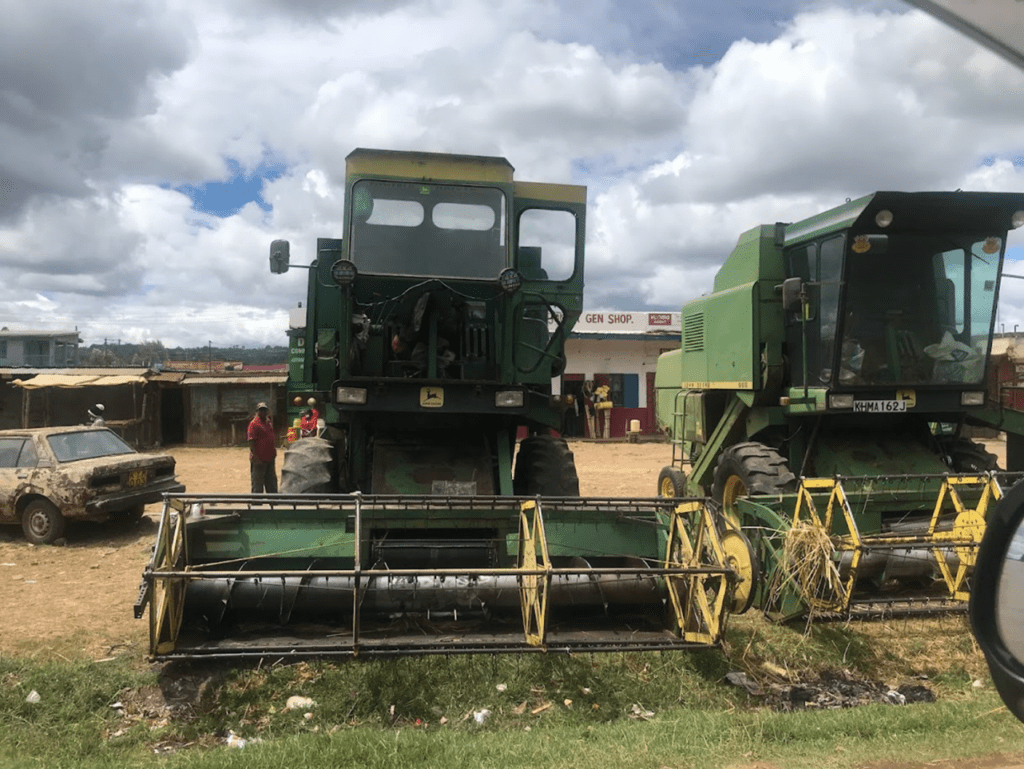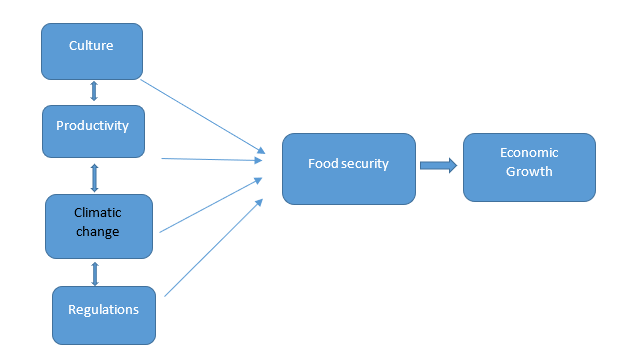Agriculture contributes about 20 percent of our GDP (CBK, 2023) and is predominantly rural based. You can be arrested for keeping livestock in the city. Someone called kanjo on me when I tried keeping chicken in the city. It was my bold attempt to be food secure. City by-laws see that as a nuisance. Agriculture is the key employer in the rural areas, though most people do not think they are employed if working on the farm. Thanks to our upbringing; escaping from the back breaking farm work was a dream, motivating us to work even harder in school.
Key employer and contribution to GDP are good raison detre for devolving agriculture as per 2010 constitution. But closer to where the action is was a better reason. It’s another question how you can make rural folks appreciate agriculture. Urbanites probably appreciate agriculture because they pay a lot for food.
14 years after the new constitution, we can boldly ask if devolution has had dividends in agriculture. The Kenya Devolution CSO working Group (KDCWG) Study on Devolution @ 10 notes that despite some moderate levels of efforts by counties to support income increases in agriculture, livestock, and fisheries, these efforts are often ineffective due to a complex interplay of environmental, structural, economic, and political challenges such as rapid urbanization, lack of value addition, inadequate market access, insufficient investment, limited expertise and infrastructure, climate change, and weak political will.
We can use a few parameters in assessing impacts of investment in agriculture. Are more rural folks food secure? Has productivity gone up? Has agriculture “star” risen recognizing its central role in the rural and national economy?
Let’s start with food security. Food security is there if the families have enough to eat, store or sell. The Devolution @10 report by Kenya Devolution CSO working Group notes that while there have been some improvements in food security due to increased agricultural investments by county governments, overall progress across counties remains moderate to low. Insufficient financial resources and mismanagement of projects, water scarcity, reliance on traditional farming practices, land fragmentation, declining youth interest in agriculture, and dependence on external food supplies hinder food security.
Food insecurity is manifested by the fact that family food is often supplemented by urban relatives or diaspora. Lots of remittances are used to buy food. IFAD (2024) puts it very clear, “Over 50 per cent of remittances are sent to rural areas, where 75 per cent of the world’s poor and food-insecure live.” It would be interesting to ask how many months of food supply an average family have – just like months of import cover set by the government.
More curious is that in the past every home had a granary. Few Genz have seen a granary. The absence of granaries is a sign of good insecurity.

The second aspect of food security is nutritional. Families may get enough to eat but is it nutritional enough? Poverty often means filling the stomach matters more than what fills it. Add our traditions that demand we must eat certain foods and nutrition takes a back sit. Would we eat insects to supplement our diet? Would we eat fish despite growing up without it? Culture is a big hurdle in nutrition. Schools can introduce children to different diets. I ate fish for the first time in high school and liked it ever since.
Weather systems decide what’s to be grown. Let’s add that lack of experimentation is a hindrance to food security. Extension officers should advise us on the best crops or livestock to keep. I recently tried growing grapes along Thika road and have already harvested ! . I thought grapes are for South Africa and other temperate regions. How many families eat a balanced diet so much taught about in primary school? Do counties bother to know what is eaten in the local schools?
Family food security is supplemented by government effort in case of emergencies like drought or floods. How many counties have strategic foods reserves? What percentage of emergency funds in counties is reserved for food security? While government fertilizer subsidies help increase food security, what of the county efforts? What incentives do farmers get from counties? Think of European, American or closer home Indian farmers. They have access to credit, subsidies, technology and advice from universities or research institutes.
Is productivity rising in devolved units ? Are farmers getting more out per acre of their crops? Are they getting more milk or meat per cow or goat?
This parameter is key going by land fragmentation and less reliance on technology. Some children have never seen a tractor or combine harvester at work.
What of taking advantage of global trends. Have wheat farmers benefited from shortage of wheat because of war in Ukraine? I have noted revival of wheat growing in Laikipia and Nyandarua.

Productivity goes up if farmers use innovations like drip irrigation, natural manure, ICT or new crops like GMO (though resisted). Anecdotal evidence shows productivity has not gone up. The key culprit is land fragmentation making mechanization hard. Culture again, why can’t families leave land to one person who would pay off the rest to stop subdivision? Can we have minimum lot size anchored in law?

The other big question is if agriculture is now a star; a rewarding occupation and more if more youngsters would love to be farmers. Going by admission to universities, agriculture is not the most popular option. In some universities, zero students choose it. Looking at high school subject clusters, few students choose agriculture compared with say computer studies.
Beyond counties and families, the macro environment matters too. The national government has been slow to let the counties go, the ministry of agriculture and livestock (livestock is less emphasized) has had a big bureaucracy since colonial times. It has lots of resources and power. Would letting the counties go rejuvenate agriculture in the counties? Counties got the mandate but not the seed money to start off. Should we redefine the role of Ministry of Agriculture to be in tune with global practices? USDA (2024) says “we provide leadership on food, agriculture, natural resources, rural development, nutrition, and related issues based on public policy, the best available science, and effective management.” Can do the same at county and national levels?
Add the international dimension to agriculture like economic partnership agreement (EPA) with EU. Do farmers (including livestock keepers) know how such agreements affect them? Add the push to do away with subsidies by IMF. What does EAC, Africa free trade area and Africa’s Agenda 2063 say about food and agriculture? Do their policies cascade to the farmers and their less than an acre farm? Do food imports depress local prices and discourage the farmer from producing more?
We want farmers to increase productivity, but we must get a bigger market beyond urban areas. We often have cheaper imports because farmers elsewhere are subsided. Remember potatoes imports from Egypt of all places?
National interconnectedness will ensure exchange of food; some regions are food deficit others have surplus. This connectedness will also reduce food prices and make families food secure.
Agriculture, with world population growing will remain central to our lives. In developed countries farmers are few but influential. Seen their tractors on Paris streets? In Kenya they are many but not influential. Devolution should have made farmers influential with county governments positioning agriculture as the fulcrum of rural economic transformation.
Here are the low-lying fruits for county’s agriculture.
- Lobby the national government to set the counties free to run agriculture with commensurate resources
- Have farmers represented in international forums where agriculture issues are discussed. That will lead to global standards and benchmarks. Can the issues addressed in these forums be translated into local languages?
- Set minimum lot sizes to preserve agricultural land. Zone counties, and ensure agricultural land is not converted into commercial use.
- Give incentives to farmers beyond fertilizer. Guarantee minimum return (GMR) is a still a great idea.
- Get strategic food reserves, like oil to stabilize prices and ensure less waste.
- Connect farmers to local and global supply chains, they will make money and attract entrepreneurs.
- Make farming cool and more productive with innovations, technology and integrating Genz and research institutes. What is the iPhone in agriculture?
- Integrate ministry of agriculture with others eg water and roads. The resulting synergy will increase productivity and food security.
Conclusion
Devolution should give agriculture the impetus it needs. It brought power and responsibility to the grassroots. But that has not been cascaded to farmers who are at the frontline in food security, as they improve their livelihoods and create national pride. A hungry nation can’t be a proud nation.
REFERENCES
CBK, https://www.centralbank.go.ke/
EPA, https://policy.trade.ec.europa.eu/development-and-sustainability/economic-partnerships_en
KCDWG 2023: Devolution @ 10: A people’s perspective. Nairobi, Act Change Transform.
USDA, https://www.usda.gov/our-agency/about-usda
XN Iraki is a Professor, Faculty of Business and Management Sciences, University of Nairobi.
@Kenya Devolution Program, Act Change Transform 2024






















